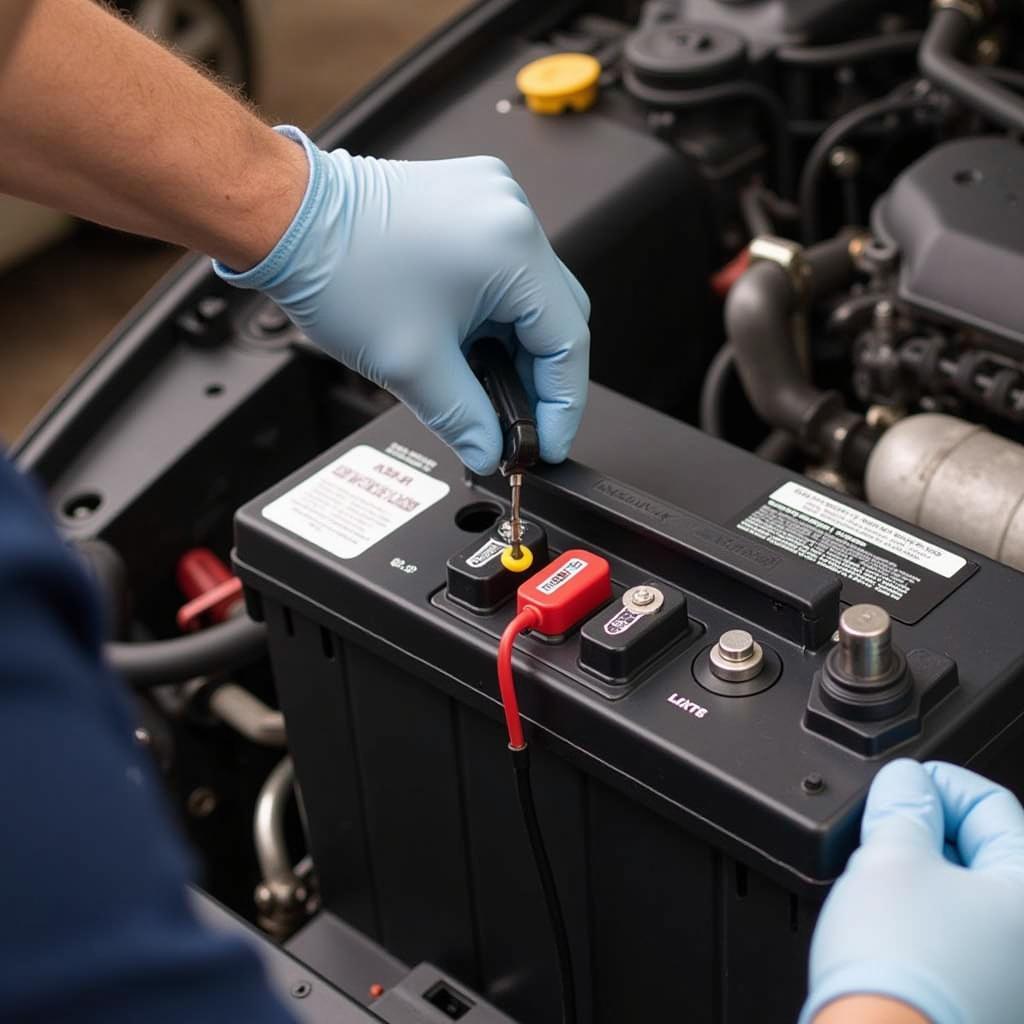A dead car battery, indicated by a low or “dead voltage,” is a common problem that can leave you stranded. This article will explore the causes of a dead car battery voltage, how to diagnose the issue, and potential solutions, including remote software fixes.
Understanding Car Battery Dead Voltage
What does “car battery dead voltage” mean? It essentially means the battery doesn’t have enough power to start the car or power its electrical systems. A fully charged car battery should read around 12.6 volts. A voltage reading below 12.4 volts usually indicates a low charge, and anything below 11.8 volts signals a dead battery. But voltage isn’t the only indicator; you also need to check the battery’s Cold Cranking Amps (CCA) rating, which measures its ability to start the engine in cold weather.
Many factors can contribute to a voltage of dead car battery. Leaving lights on, extreme temperatures, old age, and parasitic drains are just a few examples. Correctly diagnosing the cause is crucial for implementing the right solution.
Diagnosing a Dead Car Battery
A multimeter is your best friend when it comes to diagnosing a dead car battery. Simply connect the red lead to the positive terminal and the black lead to the negative terminal. The reading will tell you the current voltage. If you see a car battery warning, don’t ignore it! It’s a clear sign that something is wrong with your electrical system, possibly including the battery.
What if your dead car battery won’t charge? This could point to a faulty alternator, a problem with the charging system, or even a completely dead battery that needs replacing.
 Checking the car battery charging system
Checking the car battery charging system
Using Remote Diagnostics and Software Fixes
Modern vehicles often have sophisticated computer systems that control various functions, including the battery management system. In some cases, a low voltage issue can be caused by a software glitch or a miscommunication within these systems. Remote diagnostics and software updates, performed by skilled technicians via specialized equipment, can sometimes resolve these problems without needing physical access to the vehicle. This can be a convenient and efficient solution for specific software-related battery problems.
Solutions for a Car Battery with Dead Voltage
The solution to a dead battery depends on the underlying cause. Jump-starting the car is a temporary fix to get you back on the road. However, it doesn’t address the root problem.
If the battery is old, it might be time for a replacement. If your battery goes dead after a few days, a parasitic drain is a likely culprit. Identifying and eliminating this drain is crucial to preventing future issues. Remember that even after a jump start, if your car not starting after boost, further diagnostics are necessary.
 Installing a new car battery
Installing a new car battery
“Always disconnect the negative terminal first when disconnecting a battery, and connect it last when installing a new one,” advises John Smith, a veteran automotive electrician with over 20 years of experience. “This helps prevent accidental shorts.”
Another helpful tip from Maria Garcia, a certified automotive technician, is to “regularly clean your battery terminals to prevent corrosion, which can impede the flow of current.” She adds, “A little baking soda and water can do the trick.”
Conclusion
Dealing with a car battery dead voltage can be frustrating, but with the right knowledge and tools, you can diagnose and fix the problem. Whether it’s a simple jump-start, a battery replacement, or a more complex software update, addressing the root cause is vital. Remember, preventative maintenance like regular battery checks and terminal cleaning can help you avoid a dead battery situation altogether.

